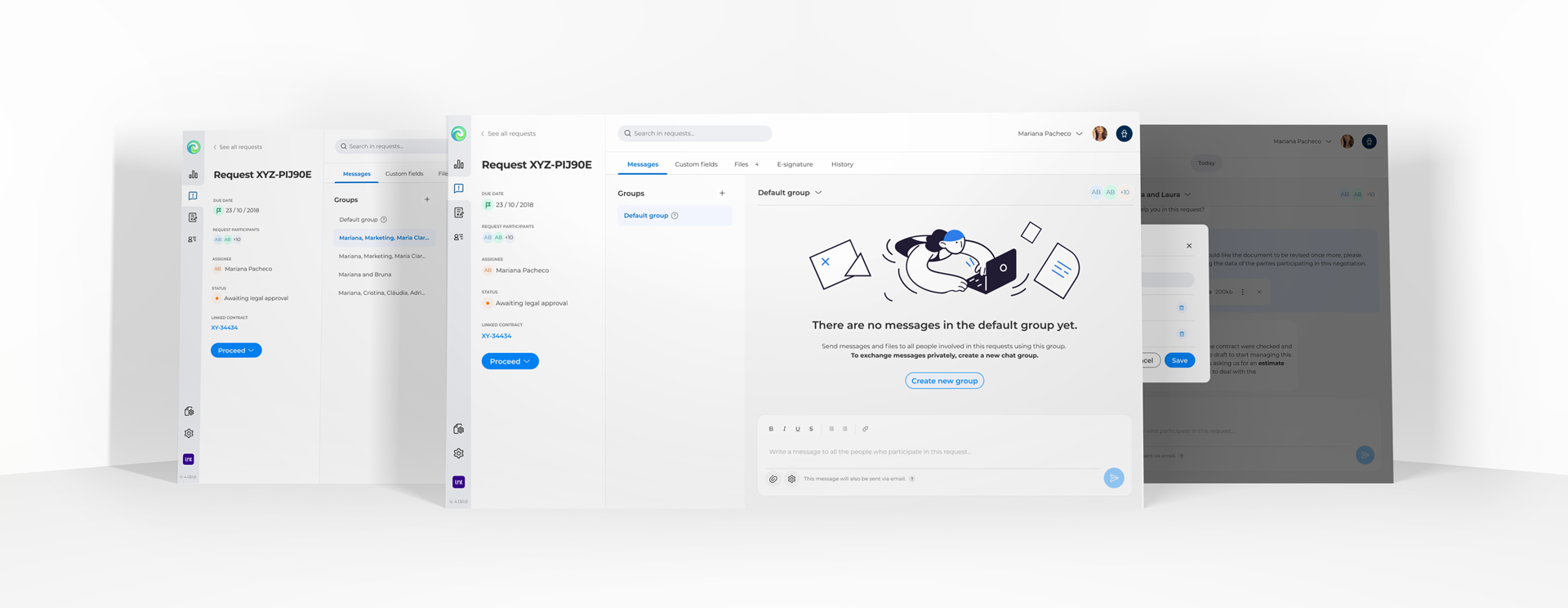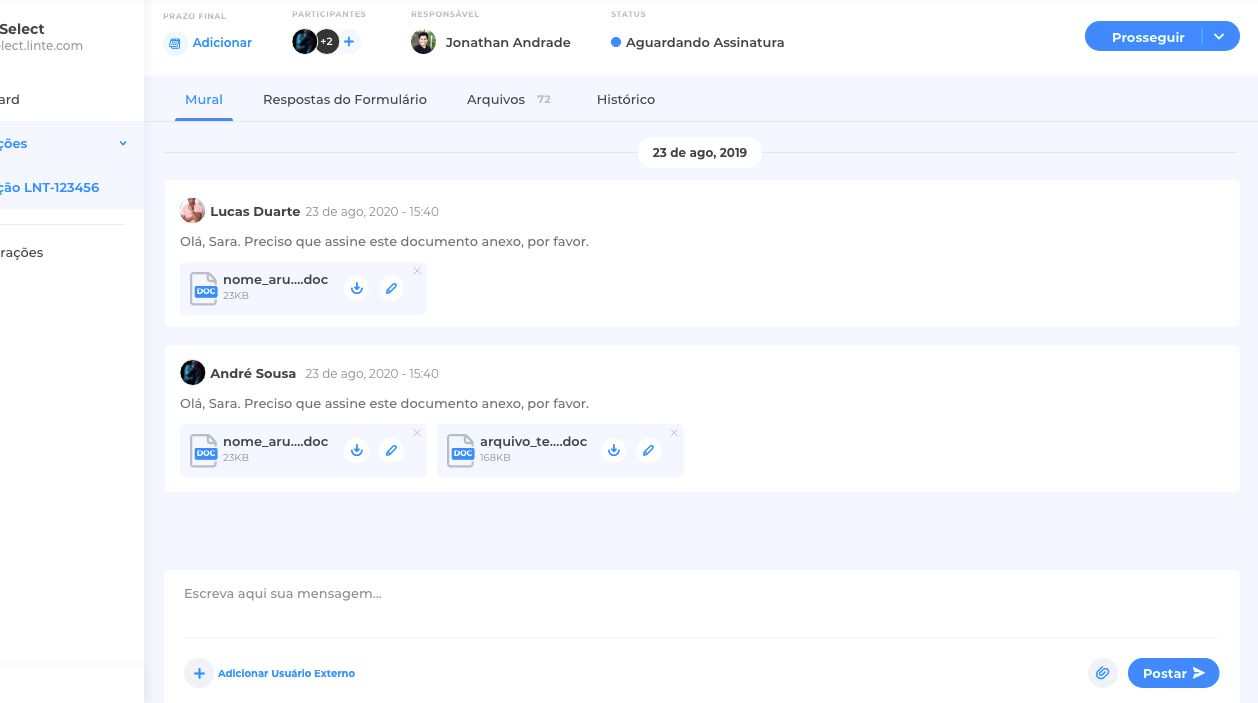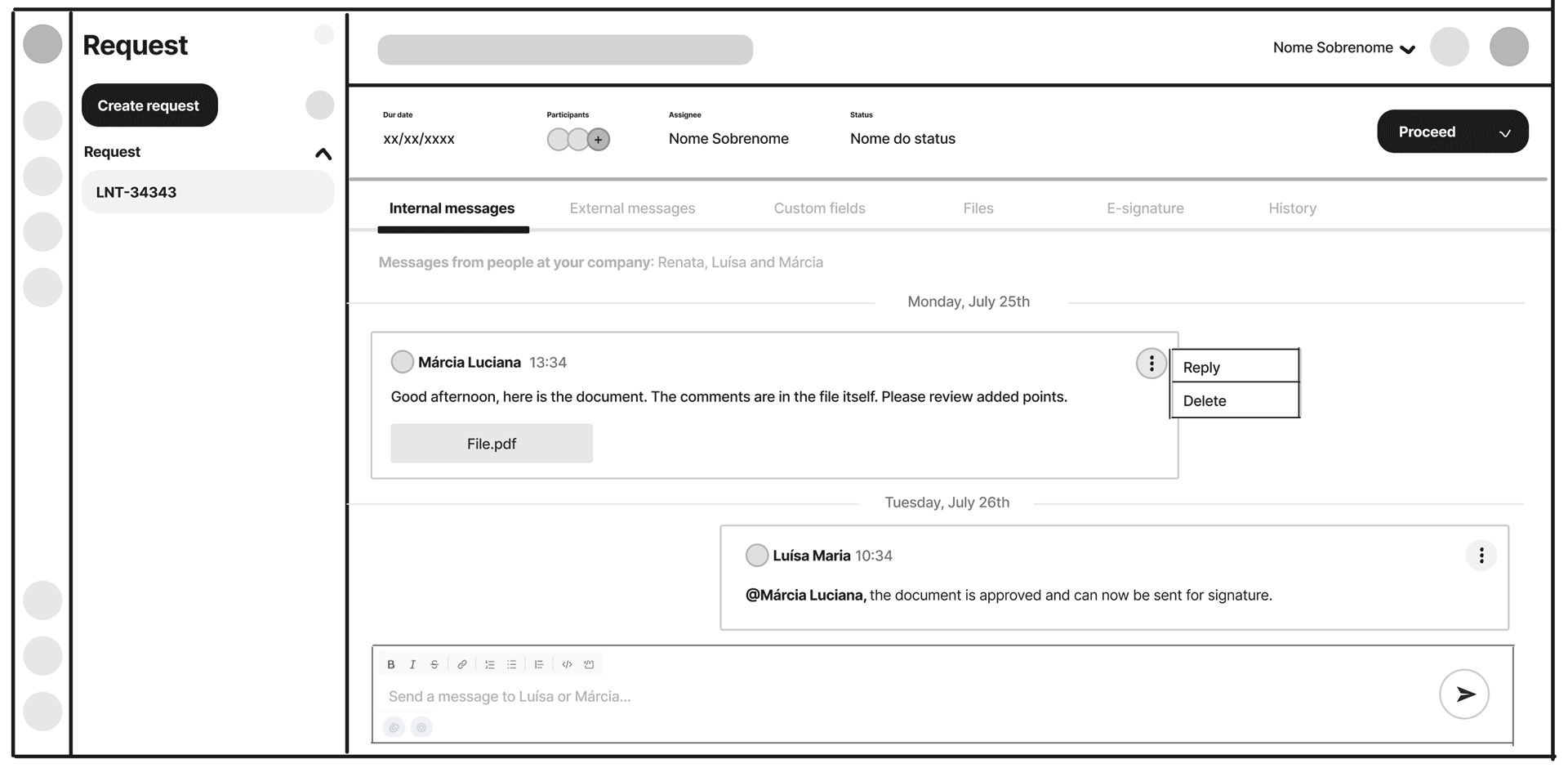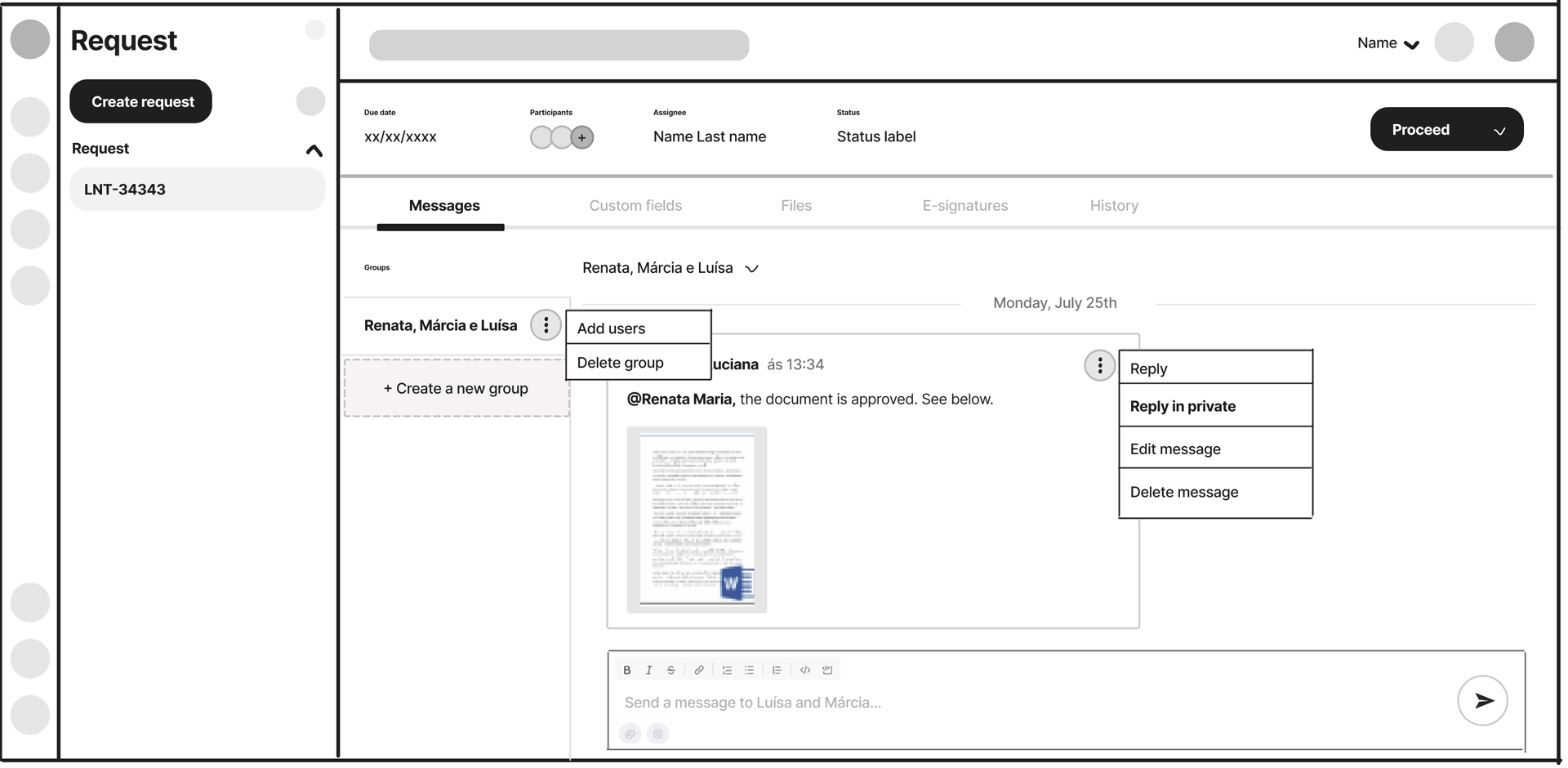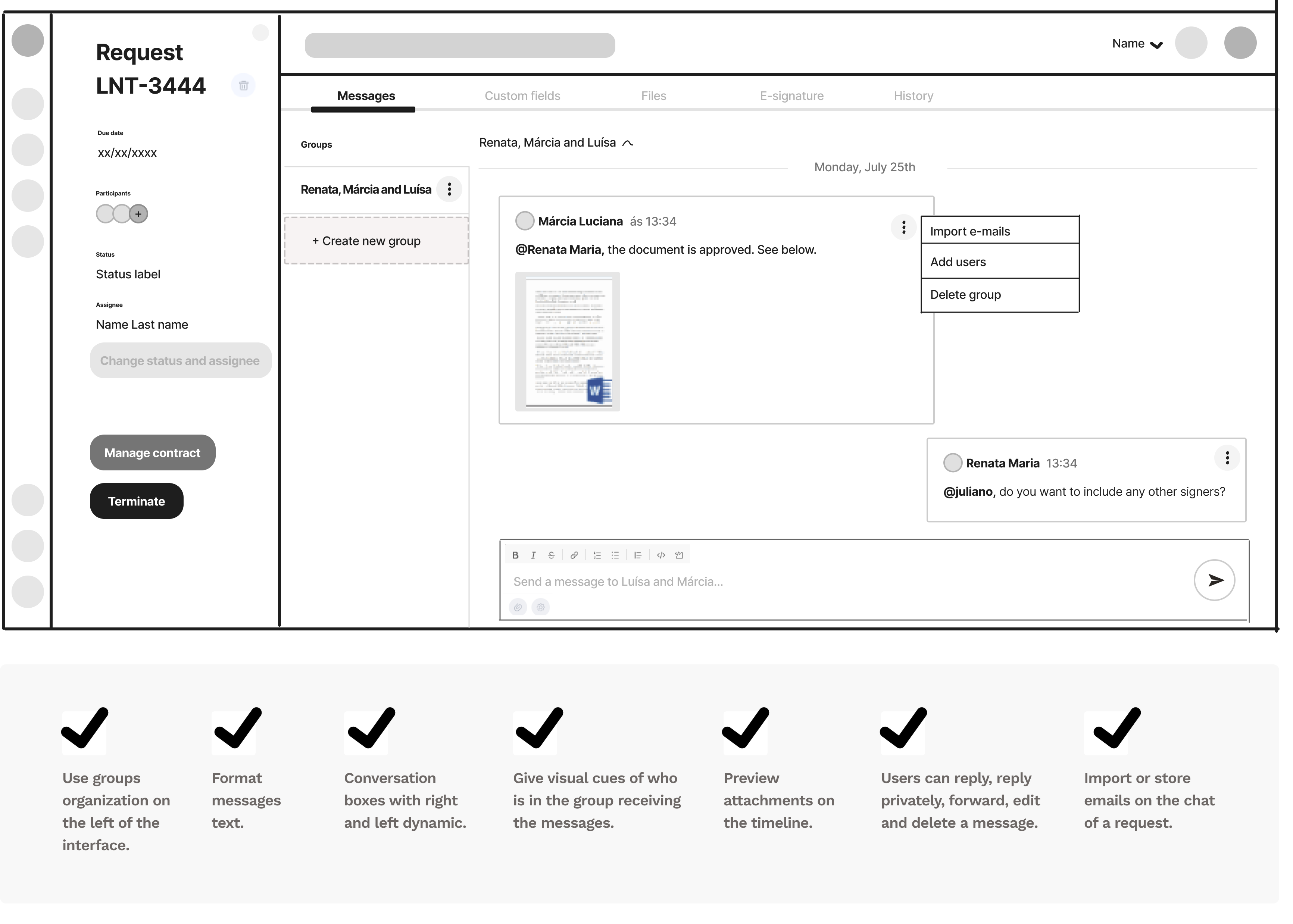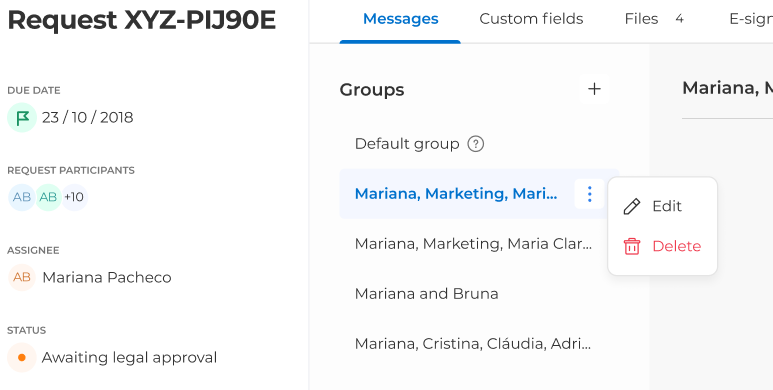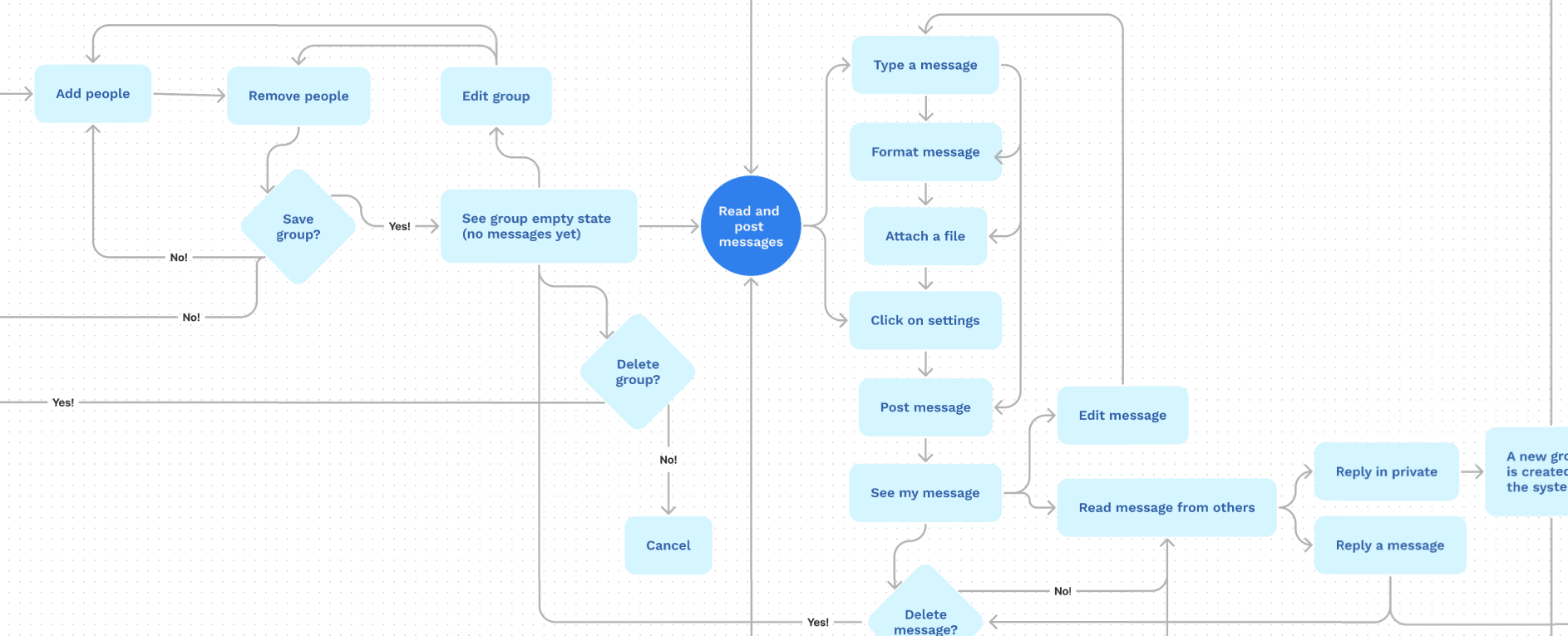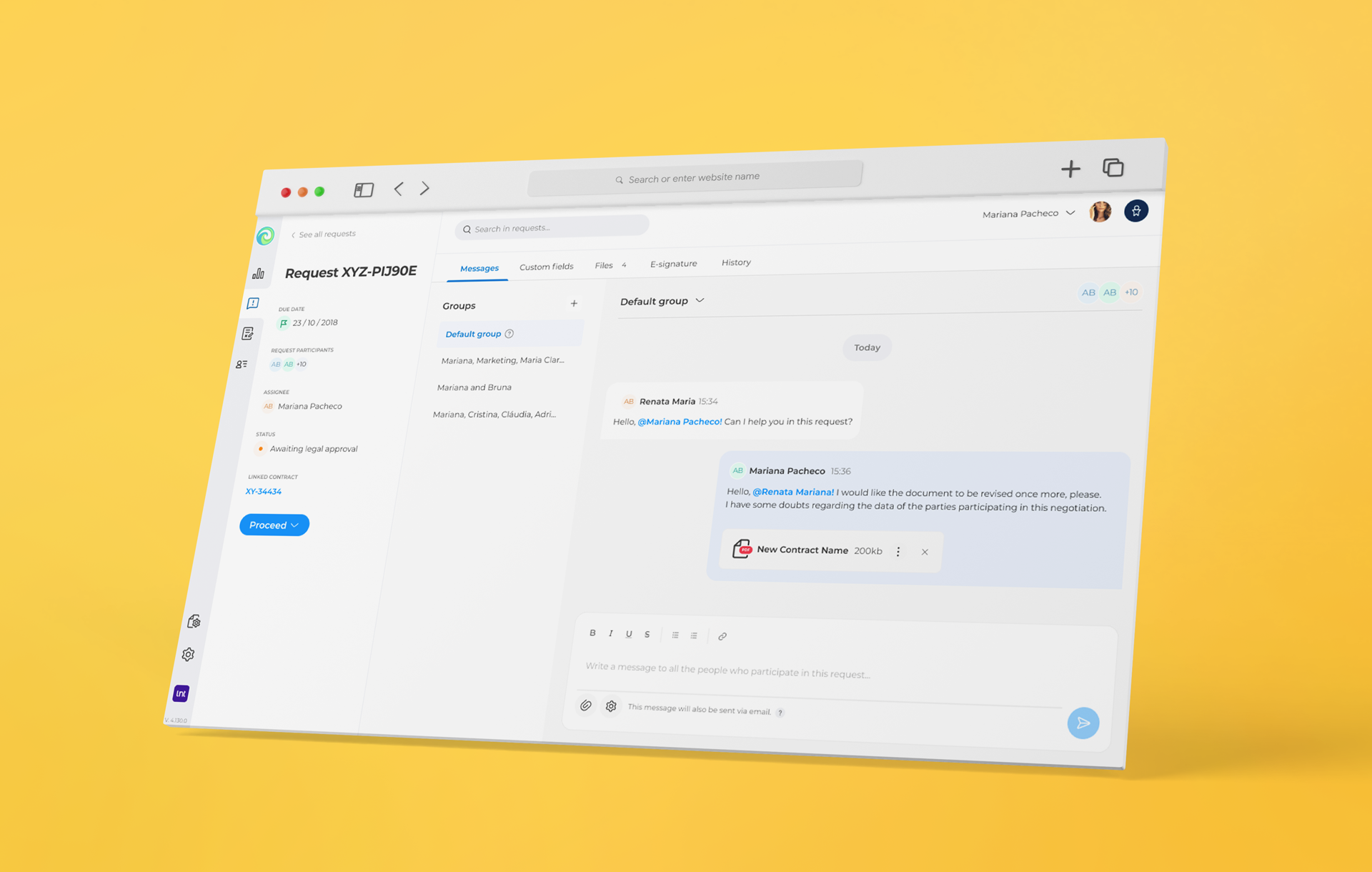This project was developed for a desktop application, Linte Hub, created by Linte, a startup (law tech, B2B, SaaS). In it, users create and respond to and manage legal demands, in addition to managing contracts.
Before this project, Linte Hub already had a message board for each legal request opened on the platform. Negotiation of legal terms when dealing with legal requests is a huge part of Linte’s business.
The problem
During contract negotiation, people need to talk about terms and clauses. Even though Linte had a message board, people weren't engaging as many people as they wanted in conversations or exchanging all the necessary messages through this channel.
Some were using email to deal with sensitive matters, some were pasting email threads in the message board to keep a history, and some were not using the board at all.
People were leaving the product to do other tasks, which could be one of the causes of the engagement on the platform not growing.
Business and product outcomes
At this moment, the product outcome was based on engagement raise and the business outcome related to MRR growth.
As we noticed the engagement was being affected by the negotiation of contracts, we decided to prioritize resolving this problem. The main objective was to maintain people in the product for more time and help them to bring more people to it, raising engagement.







